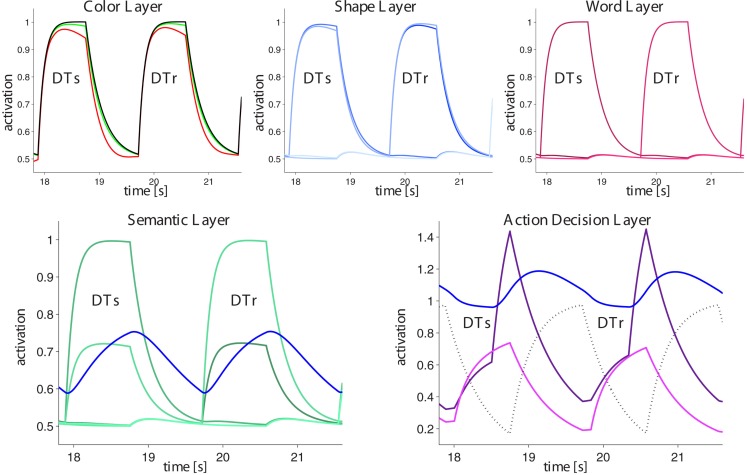Figure 7.
Activation traces over time in the relevant layers of the GMNP in the comparison paradigm. For coloring see Figure 6. The model is tuned to distractor inhibition mode, see Section 3.1. Two different conditions are shown: DTs, the former target becomes the current target and the reaction switches (from no to yes in this case); and DTr, again the former distractor becomes the current target but now the reaction does not switch (yes in both prime and probe trial). This plot illustrates the difficulty of comparing theories that are developed in a different context. Distractor inhibition theory itself is not able to explain a reaction time difference between the two conditions, as it is only formulated on a semantic level. Indeed GMNP does not show a difference in the traces except in the action layer, where persistent activation and relative inhibition causes the observed effects.

